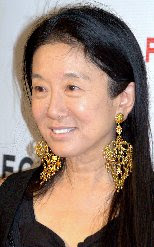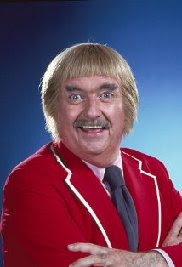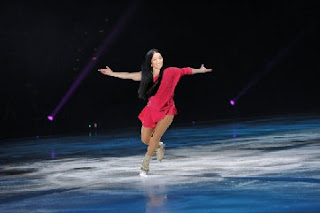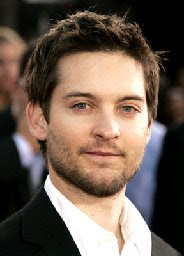Good 48º clear morning.
Yesterday we topped at 88º.
Picture of the day........more crazy clouds!
Interesting about peanut butter cookies...........
A peanut butter cookie is a type of cookie that is distinguished for having peanut butter as a principal ingredient. The cookie originated in the United States, its development dating back to the 1910s.
History
George Washington Carver (1864–1943), an American agricultural extension educator, from Alabama's Tuskegee Institute, was the most well known promoter of the peanut as a replacement for the cotton crop, which had been heavily damaged by the boll weevil. He compiled 105 peanut recipes from various cookbooks, agricultural bulletins and other sources. In his 1925 research bulletin called How to Grow the Peanut and 105 Ways of Preparing it for Human Consumption, he included three recipes for peanut cookies calling for crushed or chopped peanuts.
It was not until the early 1930s that peanut butter was listed as an ingredient in the cookies.
Fork pressing and patterning
Early peanut butter cookies were either rolled thin and cut into shapes, or else they were dropped and made into balls; they did not have fork marks. The first reference to the famous criss-cross marks created with fork tines was published in the Schenectady Gazette on July 1, 1932. The Peanut Butter Cookies recipe said: "[s]hape into balls and after placing them on the cookie sheet, press each one down with a fork, first one way and then the other, so they look like squares on waffles."
Pillsbury, one of the large flour producers, popularized the use of a fork in the 1930s. The Peanut Butter Balls recipe in the 1933 edition of Pillsbury's Balanced Recipes instructed the cook to press the cookies using fork tines. These early recipes do not explain why the advice is given to use a fork, though. The reason is that peanut butter cookie dough is dense, and unpressed, each cookie will not cook evenly. Using a fork to press the dough is a convenience of tool; bakers can also use a cookie shovel (spatula).
Mr. Foods Peanut Butter Cookie recipe.........
These flourless cookies taste great and bake in just fifteen minutes, making them the perfect cookie recipe for any occasion! We just know that your whole gang is gonna go nuts over our Easiest Peanut Butter Cookies!
- 1 cup peanut butter
- 1 cup sugar
- 1 large egg
- 1 teaspoon vanilla extract
- Preheat oven to 325º.
- In a large bowl, stir together all ingredients until combined. Shape dough into 1-inch balls and place 1 inch apart on ungreased baking sheets. Flatten gently in a crisscross pattern with tines of a fork.
- Bake 15 minutes or until golden. Remove to wire racks to cool.
- You are not reading this wrong, there is NO flour in this recipe! Enjoy!
- Good news! This dough freezes well, so you can keep a batch on hand to bake whenever a cravin' strikes.
From Mr. Food
Sometimes you want a chicken dish that's a bit fancy-tasting, without all the fancy work and cleanup. Well, this one fits the bill...and you don't have to worry about the alcohol in the wine because it should disappear during the cooking.
- 1 chicken (2½ to 3½ pounds), cut into 8 pieces
- 1/2 cup all-purpose flour
- 2 tablespoons vegetable oil
- 1 small onion, chopped (about 1/2 cup)
- 3 cups sliced fresh mushrooms (1/2 pound)
- 1 cup chicken broth
- 1/2 cup dry red wine
- 1 1/2 teaspoons salt
- 1/4 teaspoon pepper
- 1 bay leaf
- 2 tablespoons dried parsley flakes
- Place the chicken in a resealable plastic bag. Add the flour and shake to lightly dust the chicken.
- In a large skillet, over medium-high heat, heat the oil.
- Cook the chicken for about 10 minutes, turning occasionally to lightly brown both sides.
- Remove the chicken to a platter.
- Add the onions and mushrooms to the skillet and sauté for 4 to 5 minutes or until tender.
- Add the chicken broth and wine to the onion and mushroom mixture. Add the salt, pepper, bay leaf, and parsley; mix well.
- Return the chicken to the skillet, cover, and simmer for 30 to 40 minutes or until the chicken is tender and cooked through. Remove the bay leaf before serving.
***If you prefer to be "wined and dined" without the wine, simply substitute 1/2 cup of either nonalcoholic wine or apple juice for the red wine.
Historically this date...........
And births this date include....
Captain Kangaoo!

All I know. Nuff said. Have a good Tuesday. Ciao.
xo Sue Mom Bobo
Celebrated each year on June 27th, National Sunglasses Day gains popularity each year. Organizations like The Vision Council is one of the reasons. They inform people about the dangers of UV exposure and why wearing sunglasses should be more than to just make a fashion statement. So in honor of the holiday—and to help you pick out a pair of your own—we present the top 10 sunglasses styles that stand the test of time.
Prada Model SPR07F
Photo: Mary Evans/Everett Collection
Most known for their appearance in the 1963 Academy Award-winning Italian film 8 ½, these glasses are anything but old-fashioned. Prada first introduced the design as Prada model SPR07F, but the design has undergone some changes since the 60s. Regardless, these sunglasses might be one of the only designs that can not only be worn with a suit, but that makes a suit look so good.
Persol 714
Photo: Silver Screen Collection/Getty Images
The original folding glasses, the Persol 714 sunglasses debuted in the 1960s when the iconic actor Steve McQueen wore them in the film The Thomas Crown Affair. These glasses were based on the Persol 649 model. However, the adaptations included 10 additional manufacturing steps to allow them to fold. In 2006, a pair of Persol 714s from McQueen’s personal collection were auctioned off at nearly $70,000. Get suave with a—perhaps less expensive—pair for National Sunglasses Day.
Ray-Ban 3138 Shooter
Photo: Raoul Duke
While Johnny Depp was not the first to wear these yellow-tinted aviator shooters, he made them famous the film Fear and Loathing in Las Vegas. The sunglasses have a small circle between the lenses. Some say the circle aids in hunting or shooting. The style was regularly worn by Hunter S. Thompson, the author of the novel that inspired the film. Shooters also come in different color tints.
Ray-Ban Wayfarer
At their introduction in 1956, Ray-Ban’s Wayfarers revolutionary plastic frame made the design almost instantly popular. The design was a distinct diversion from the metal-framed sunglasses that were popular at the time. The sunglasses popularity continued throughout the ‘50s and ‘60s but then slumped until the late 2000s when artists like Katy Perry and Bruno Mars wore them in their music videos.
Round and Oversized
Often known today simply as Jackie O’s, these sunglasses were popularized by former First Lady and fashion icon Jackie Kennedy during the years that her husband was president. They are instantly recognizable by their large round shape and still serve to make quite a fashion statement when worn today. It’s hard to wear these sunglasses and not channel some of the grace, style, and elegance that Jackie was so famous for.
Gold-rimmed Aviator
Photo: Oliver Cheshire
The history of the archetypal Ray-Ban Aviators begins in the 1930s when US Army pilots were reporting that the glare from the sun was giving them headaches and altitude sickness. American company Bausch & Lomb created what was originally known as “Anti-Glare,” sunglasses with plastic frames and green lenses. Just a year later they were remodeled with metal frames and rebranded as “Aviators,” as we know them today.
The Clubmaster
Clubmasters are a type of browline sunglasses, which gets its name from the fact that the bold upper part of the frames frame the lenses like the eyebrow frames the eyes. Ray-Ban introduced the Clubmaster in the 1980s when Bruce Willis wore a pair of browline Shuron Ronsirs on the series Moonlighting. The Clubmasters gained popularity and quickly became the third best-selling sunglasses of the 1980s, after Ray-Ban’s Wayfarer and Aviator styles.
Oliver Peoples Gregory Peck

Not only did Gregory Peck win an Oscar for his role as Atticus Finch in the 1962 film To Kill A Mockingbird, but he also won a fair amount of acclaim for the glasses frames he wore in the film. These frames are once again popular today, thanks partly to their reintroduction in 2011 when Oliver Peoples released a new model to celebrate the 50th anniversary of the novel that inspired the film. Don these on National Sunglasses Day and channel your inner Atticus Finch.
Oliver Goldsmith Manhattan
Audrey Hepburn is one of film’s most well-known faces, and it was usually with a pair of Oliver Goldsmith Manhattans framing her eyes. These large, rounded-square sunglasses were first made famous when Hepburn wore them in Breakfast at Tiffany’s, a role that was originally supposed to be played by Marilyn Monroe. The glasses, instantly recognizable today, are still popular.
Rose-colored Glasses
Photo: Allyn Scura
“To see the world through rose-colored glasses” is a phrase that means to view the world in a perpetually optimistic, perhaps naive, and unrealistic way. It remains in question what the origin of the phrase is, though there are some interesting and possible theories. One theory suggests that early mapmakers used rose petals to clean the lenses of the glasses. Not only would the natural oils protect the glass, but they would also leave a rose-colored stain.











No comments:
Post a Comment